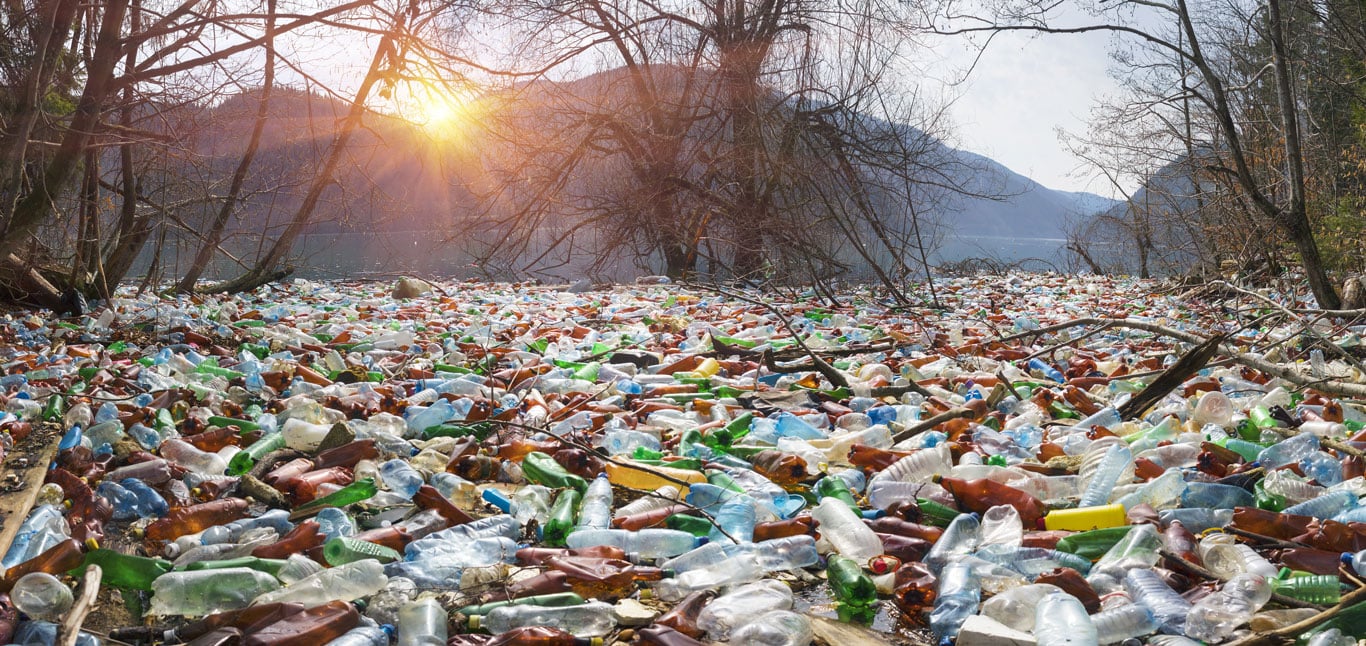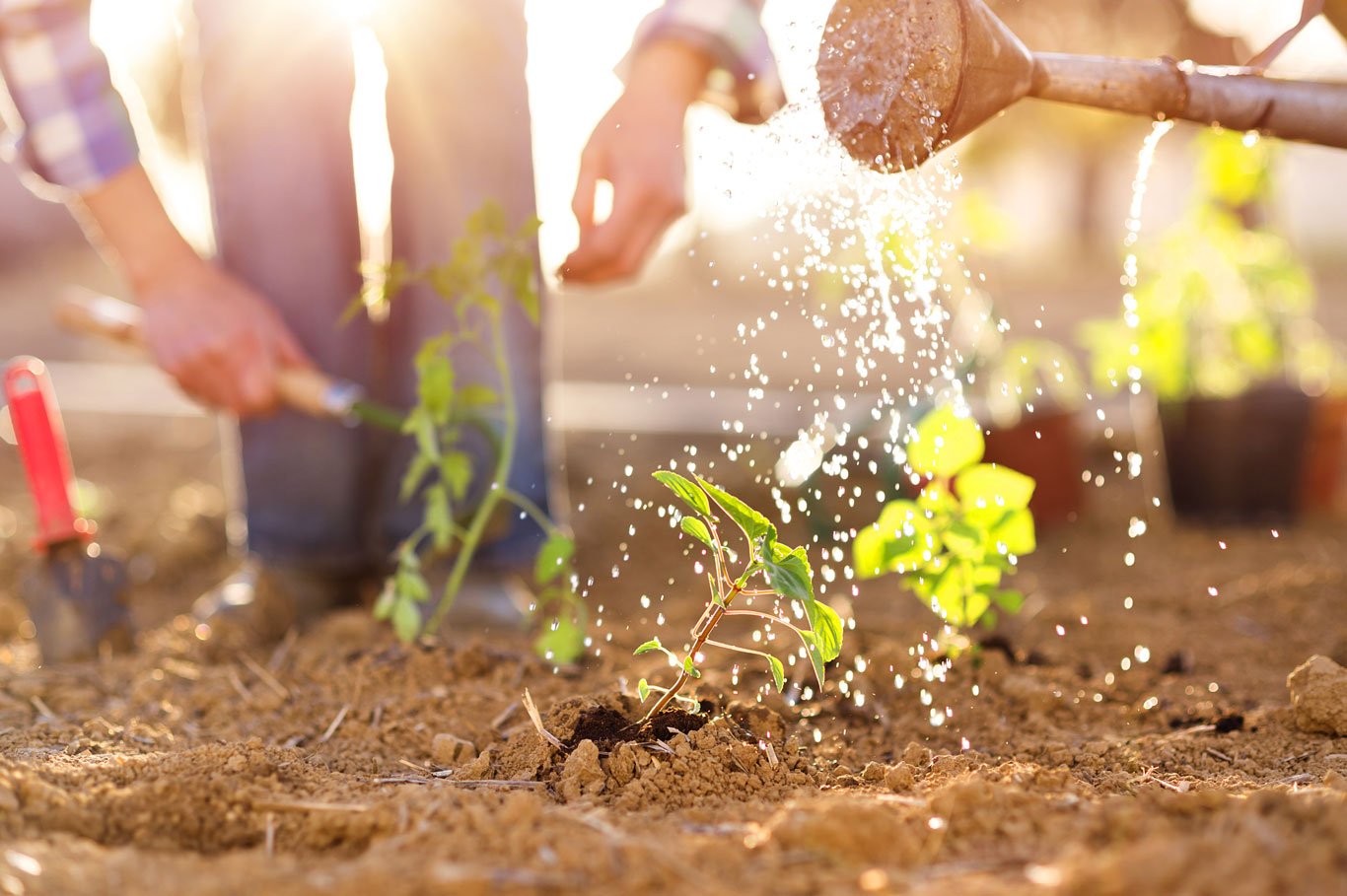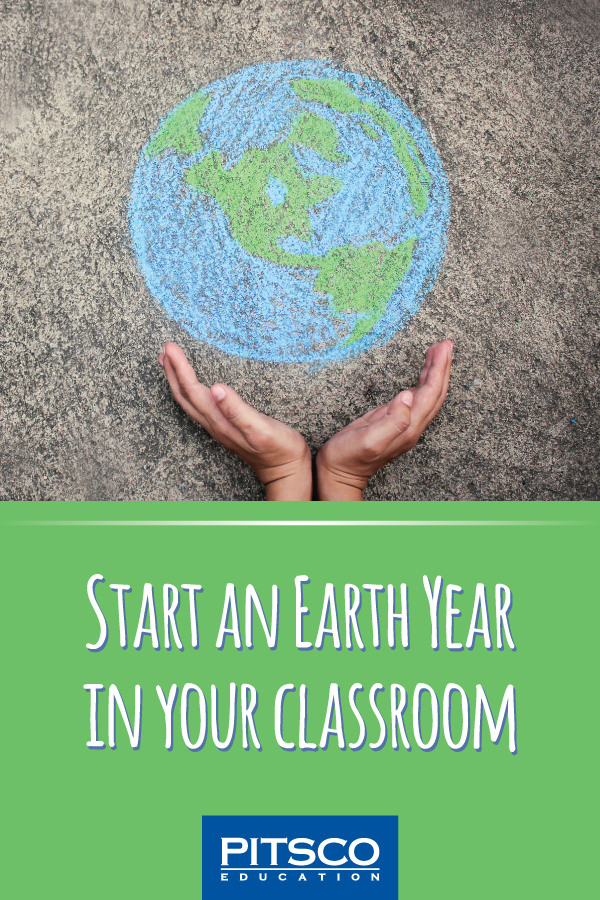Earth Day is a great reminder every year on April 22 that we need to take care of the our planet because resources are limited. And it’s awesome that there’s a special day to celebrate with special events, but what about the rest of the year? How can this reminder be made part of everyday life and the lives of your students? Let’s take a look at projects that could make it an Earth Year.
There are so many ways to help the environment; the following are a few that might fit well in your classroom. Or check out some resources at the end that could inspire your class to make a difference.
Be Mindful of Water Bottles
The facts:
- The convenience of plastic disposable water bottles is great, but the impact in our landfills and oceans is a lot less desirable. Read more about the trash in our oceans at Oceanservice.noaa.gov.
- According to Forbes.com, “Two statistics jump out immediately. One, that globally humans buy a million plastic bottles per minute. The second, 91% of all plastic is not recycled.”
- The amount of plastic being used is only growing.

Suggestions:
- Your school can set an example by providing recycling bins and promoting their use. Or maybe your class can initiate and maintain this program.
- Recycle the bottles by using them for makerspace projects. There are tons of ideas online for DIY upcycling projects that you can use as inspiration.
- Replace disposable water bottles in vending machines with reusable water bottles that can be refilled using school water fountains. Or make Bring Your Own Bottle a big deal. You could set aside time in class to talk about the issue and let students customize their bottle with stickers, clings, metallic markers, etc.
Food for Thought
The facts:
- Buying locally grown produce is generally the way to have the least environmental impact, but there are situations where shipping food from farther away makes sense, such as when manual labor is used instead of mechanized methods for planting, cultivating, and harvesting.
- According to Theecologycenter.org, “The average carrot travels 1,800 miles to find its way onto your dinner plate. That’s plenty of miles which contributes to more carbon emissions from food production, transport, and retail.”
- Locally grown food can be fruits, vegetables, dairy products, eggs, and meat. Farmers’ markets are popping up in small communities everywhere, but you can also find them at many local grocers. And don’t forget backyard gardens and container gardens (Arrowquip.com)!

Suggestions:
- Take a field trip to a local farmers’ market and explain how many items are sold by weight and that the veggies and fruits are seasonal, so the selection will vary from spring to fall.
- Take time to know where your food is coming from and how it’s grown. Bring groceries to school and talk about where they came from. The country or sometimes state of origin is usually noted under the bar code on produce or on the shelf price tag. Map out each location and how many miles the food traveled, explaining the carbon footprint it left.
- Start a school greenhouse or garden for a hands-on experience of the growing process. If you don’t have the land or funds, then start smaller with a few containers of tomatoes. The plants or produce could also be sold to add an extra lesson about commerce.
Saving Energy
The facts:
- There are three sources of electricity in the US: fossil fuels, nuclear energy, and renewable energy. And we are the second largest consumer behind China, at approximately 4,015 billion kWh in 2017 (www.eia.gov).
- Factors that affect the cost of lighting and how long a light bulb lasts are the type of bulb, how often it’s turned on and off, and the bulb’s wattage rating (Energy.gov).

Suggestions:
- Calculate the energy used by the bulbs in your classroom during the class period and discuss the types of bulbs available.
- Discuss the difference between energy sources and which ones are used by your local electric company.
- Have your students build their own windmill or solar car to understand how renewable energy is accessed.
- Research apps for home automation that can help when you forget to turn out the lights.
Put it All into Action
After the project is chosen, make sure to set goals. Projects tend to start out strong but can fade over time, so make weekly, monthly, and/or a yearlong goal to regenerate interest over the long haul. And make a schedule to check up on how things are going as a reminder. Repetition is going to nurture the new habits and mind-set needed to improve our environmental impact.
You might check with other classes, grade levels, or schools to see if there are collaboration opportunities that could take your project to the next level for both your students and the Earth. Each grade level could have a responsibility to fit their capabilities. And getting family and the community involved would be even better.
Has your school done a project that others can replicate or learn from? Don’t be shy; comment and share your knowledge.
Resources:
10 Ways to Make Every Day Earth Day
Earth Day Tips
Make Every Day Earth Day

TOPICS: IN THE CLASSROOM, IDEAS & INSPIRATION, Culture, Social and emotional learning, Activities



